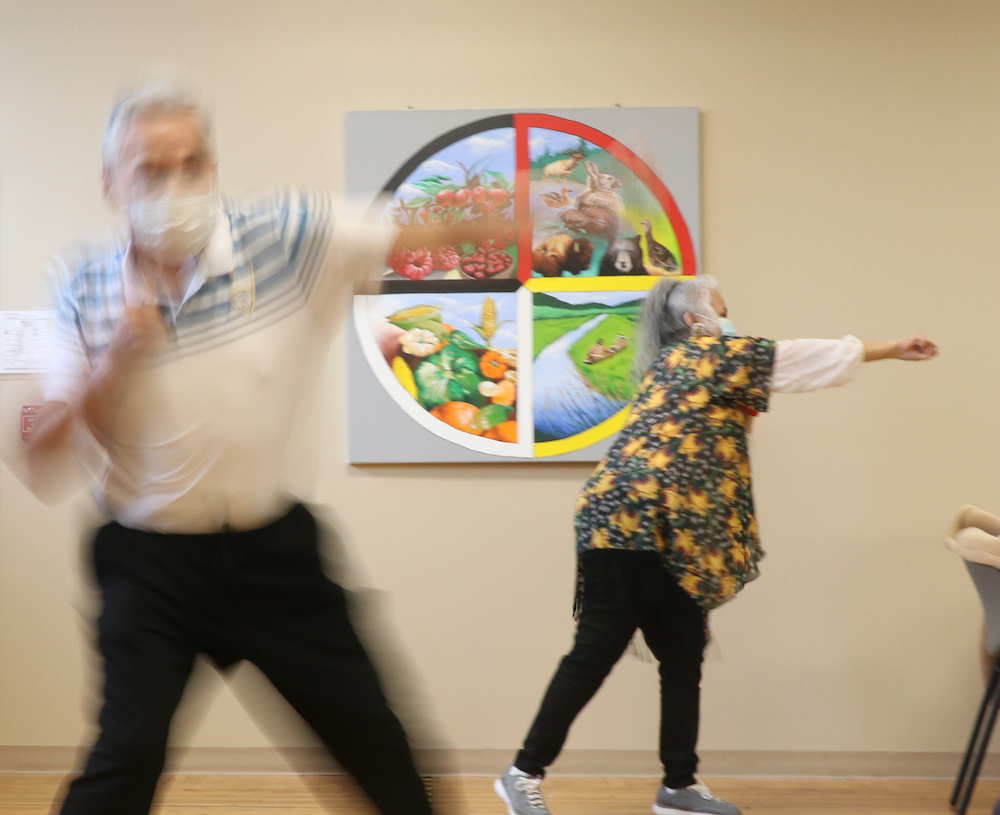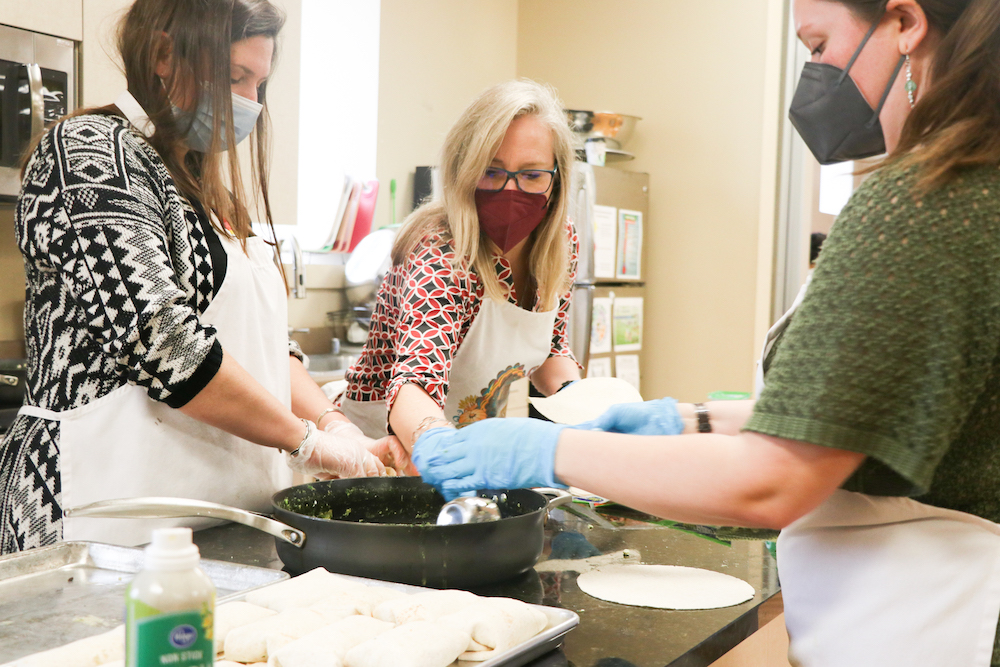
- Details
- By Isabel Miller and Cristobella Durrette, Special to Native News Online
MILWAUKEE — Duane “Dodge” Waubanascum, once an amateur boxer from the Oneida Nation who won two Golden Glove titles in the 1970s, stands in the back of a room watching a group of fellow Native American Elders participate in a boxing class.
“If you don’t have your physical health, you don’t have your mental health,” the 64-year-old Waubanascum said.
He has been coming to the Work Out Low Fat Elders (WOLFE) Program at the Gerald L. Ignace Indian Health Center for three years. The weekly program is designed to educate Native American Elders — as well as some non-Native seniors — how to eat and exercise with their unique health needs in mind.
Want more Native News? Get the free daily newsletter today.
Alex Forsythe, a registered dietician who works with the WOLFE program, said nutrition is vital for supporting health through older age and the WOLFE dieticians try to incorporate traditional foods like beans, squash and buffalo into the meals. Exercise classes range from yoga and dancing to boxing.
“Not only does it help support your body, but it also helps support you know, your spirit, your mind, your body, and your spirit. And it just helps them connect to their traditional ways,” WOLFE director Diana Osberg said.
Going further for health education
According to Osberg, Native Americans have higher incidences of heart disease, hypertension and Type 2 diabetes, so she focuses on preventive care and proper management of disease by helping the Elders through exercising and healthy eating.
Native American and Alaskan Natives have a life expectancy of 5.5 years less than all other U.S. races, according to the Indian Health Service, and have a higher risk of death of liver disease and diabetes than other races.
“The meals are also diabetic friendly, meaning that they meet a certain carbohydrate requirement standard,” Forsythe said. “So that comes out to 60 grams or less per meal.”
 Melissa Ugland, public health advisor at the Gerald L. Ignace Indian Health Center, helps nutritionists make lunch for Elders as part of the WOLFE program. (Photo: Isabel Miller/Medill News Service)In addition to the workout and meal, the dieticians share nutrition education tips with the Elders.
Melissa Ugland, public health advisor at the Gerald L. Ignace Indian Health Center, helps nutritionists make lunch for Elders as part of the WOLFE program. (Photo: Isabel Miller/Medill News Service)In addition to the workout and meal, the dieticians share nutrition education tips with the Elders.
“We’ll share about usually a 10 to 15-minute presentation on a nutrition topic that usually relates to the meal that we're serving that day and just engages the Elders (to) kind of see what they already know about this topic,” Forsythe said.
Steve Pilot, a 62-year-old member of the Menominee Nation, said WOLFE was his introduction to nutrition education. He has had two heart attacks and now wants to keep healthy.
Pilot said the Clinic feels like “one big family.”
During the program, providers also offer blood pressure and blood glucose checks for the Elders, along with a traditional prayer and smudging led by a cultural adviser.
In addition to weekly exercise sessions, WOLFE also gave the Elders pedometers earlier this year to track their steps.
“I do about 10,000 steps a day, I'm probably one of the leaders in that,” Pilot said.
Culturally Competent Care
Dr. Lyle Ignace, head of the Gerald L. Ignace Indian Health Center, said that it is important that WOLFE recognize the diversity of Native peoples: there are 574 federally recognized tribes in the U.S., according to the Bureau of Indian Affairs.
Members of about 70 tribal nations receive care at the clinic, according to Ignace.
“Each recognized tribe has its own dialect, its own language, its own culture, as well as its own traditions,” Ignace said. “And so that's where being understanding and recognizing how (to) approach someone in a cultural manner that's appropriate to them (is important.)”
During the pandemic, providing WOLFE programming to Elders became more difficult with the suspension of in-person meetings, Ignace said. In the early months of the pandemic, when Elders couldn’t meet with the network of friends they had developed at the center, WOLFE made and delivered meals to the Elders’ homes to maintain their connection with WOLFE.
Rebecca Delgado, 63, a member of the Stockbridge Munsee Community, said she received meals from the program during the pandemic, but missed the social aspect. Now, Delgado is glad she’s able to come back to the center.
“I'm that type of person,” Delgado said. “I need contacts, I need laughing, I need hugs…just sitting home not doing nothing, depression hits you really quick.”
Help us defend tribal sovereignty.
At Native News Online, our mission is rooted in telling the stories that strengthen sovereignty and uplift Indigenous voices — not just at year’s end, but every single day.
Because of your generosity last year, we were able to keep our reporters on the ground in tribal communities, at national gatherings and in the halls of Congress — covering the issues that matter most to Indian Country: sovereignty, culture, education, health and economic opportunity.
That support sustained us through a tough year in 2025. Now, as we look to the year ahead, we need your help right now to ensure warrior journalism remains strong — reporting that defends tribal sovereignty, amplifies Native truth, and holds power accountable.
 The stakes couldn't be higher. Your support keeps Native voices heard, Native stories told and Native sovereignty defended.
The stakes couldn't be higher. Your support keeps Native voices heard, Native stories told and Native sovereignty defended.
Stand with Warrior Journalism today.
Levi Rickert (Potawatomi), Editor & Publisher
